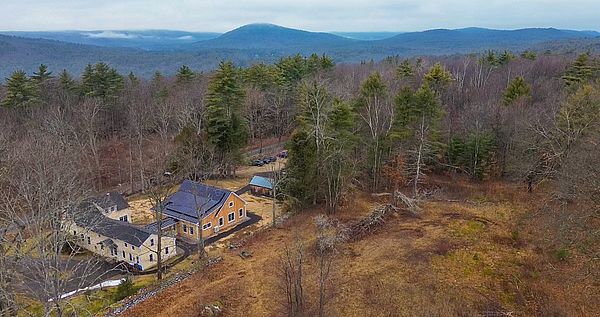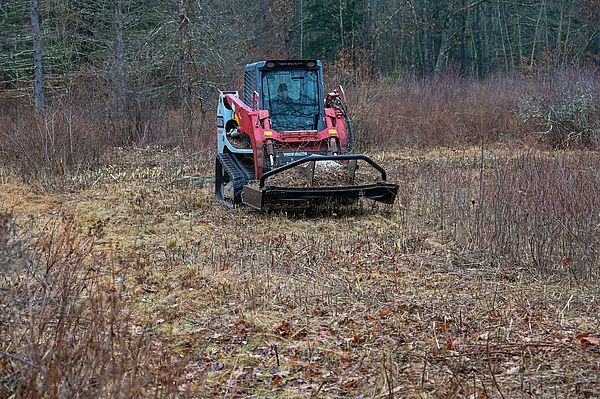If you've visited Skyfields Arboretum recently, you may have noticed how open the fields behind our office have become. Earlier this winter, Mount Grace, with the help of farmer and board member Phil Stevens, undertook a thorough clearing of brush that had overtaken the old agricultural fields. While this intervention—preventing trees and shrubs from reclaiming land cleared by human activity—might seem at odds with the goal of protecting natural landscapes, it serves an important purpose.
Across the vast stretch of greenery from Route 32 in Athol (the western edge of Skyfields Arboretum) northward through Lawton State Forest to the shoreline of Tully Lake, open meadows are almost nonexistent. As important as unfragmented, mixed forests are, the forested landscape across Lawton and Skyfields lacks early successional habitat. Managing the fields at Skyfields Arboretum as permanent openings adds much needed diversity to the larger forested landscape.
“Periodic mowing of this land is needed to reset forest succession,” says Matt DiBona, Mount Grace’s new Stewardship Director. “A healthy forest thrives when it possesses age and structural diversity.” By keeping the fields at Skyfields open and meadow-like, we ensure the herbaceous plants – including native grasses and wildflowers –continue to flourish and support the birds and animals that need them.
The Vital Role of Meadows in Supporting a Healthy Ecosystem
Meadows with native plants provide food and shelter for birds, insects and other wildlife. When we planted over 20 species of native pollinator plants in 2021, we chose a mix that would blossom at different times throughout the growing season to keep our region’s pollinators well fed. If we fail to brush hog the field every year, woody shrubs like dogwood and young tree seedlings like oaks will grow inside the field. These shrubs and trees shade out many herbaceous plants that we want to protect. If left unchecked, they’ll revert the field back into forest. To resist that process, Mount Grace plans to clear the field on an annual basis.
This effort to actively manage our land to promote healthy, resilient and diverse forest landscapes is part of the Dynamic Forest Restoration Initiative. This initiative is funded through a Landscape Scale Restoration Grant awarded by the U.S. Forest Service’s Eastern Region. It brings together a diverse network of conservation partners with a demonstrated commitment to improving forest health on both public and private land.
“The Dynamic Forest Restoration Initiative has truly been a partner effort that stretches across the public/private lands boundary and engages a broad suite of stakeholders,” said DiBona. Through this partnership, Mount Grace has worked with groups like the Ruffed Grouse Society to complete important forest management work. Our recent demonstration project at Guiney Memorial Forest improved forest habitat for birds and serves as an example for how other private deedholders can use silviculture to improve forest health on their land.


